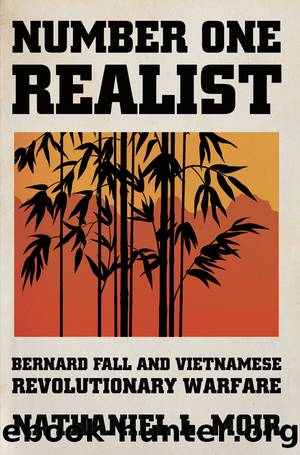Number One Realist by Moir Nathaniel L.;

Author:Moir, Nathaniel L.; [Moir, Nathaniel L.;]
Language: eng
Format: epub
ISBN: 9781787384804
Publisher: Hurst
Published: 2021-12-23T00:00:00+00:00
More than any other subject, issues related to land in North Vietnam formed internal challenges that divided and threatened Lao Dong authority. According to Benedict J. Tria Kerkvliet, âFrom the outset, collectivization exposed tensions between what Vietnamâs national leaders wanted and what a large proportion of villagers in the Red River delta preferred.â125 Fall had written about problems stemming from land reform in 1953, but, after subsequent land-related initiatives in 1955, he returned to the subject with even more critical analysis in a January 1957 article for Far Eastern Survey called âCrisis in North Viet-Nam.â126 Even though he had respected the Viet Minhâs drive for independence in prior years, he despised zealous ideology and implementation of policies that needlessly inflicted harm on civilians. He recognized that land reform contributed to mass mobilization against the French at a pivotal point in 1953. However, harsh reforms also created problems, including âThe indiscriminate lumping together of practically all land-owning groups down to the middle-class farmers into the category of âexploitersâ [which] brought about a dangerous condition in which the regime risked alienating more farmers than it could afford to in time of war.â127
The bigger problem was that the Viet Minh did not release their grip over farmers with the end of the First Indochina War. If anything, villagers faced even greater persecution as a series of farmersâ revolts in Nghe An Province indicated in November 1956.128 Also writing in an article in the Washington, DC Sunday Star, Fall noted, âA land reform program, designed to take away all land from âcapitalist landlordsâ was pushed through ruthlessly, until even the small farmers, driven to the wall by Communist cadres, rebelled against the government.â129 His broader purpose was to point out how âat the very same time as the city of Budapest rose against the Russians in November 1956, at the other end of the world Vietnamese farmers of Nghe An Province rose against their own brand of Communist oppressorsâand suffered the same fate as the Hungarians, with the difference that their heroic stand never received any of the publicity which surrounded the plight of the Hungarians.â The resistance of the North Vietnamese farmers âhad been so fierce that, for a time at least, Ho Chi Minhâs government had to stop its peasant purges. More than 50,000 innocently imprisoned farmers were released from jails and labor gangs ⦠and for a brief time some literary magazines critical of the regime were allowed to appear. But not for long.â130
The revolts in Nghe An were especially surprising because âthe territory was considered so thoroughly permeated by Communist ideas that the DRV had begun to establish Soviet-type collective farms in 1954. That open revolt against the regime should nevertheless take place in this area suggests the depth of popular resentment against the Hanoi government.â131 This was a unique and challenging view to present accurately and objectively in a US publication at the time. It was one thing to access information in South Vietnam or see the Diem administrationâs repression in action, but learning of dissent in the north was rare in the late 1950s.
Download
This site does not store any files on its server. We only index and link to content provided by other sites. Please contact the content providers to delete copyright contents if any and email us, we'll remove relevant links or contents immediately.
| Afghan & Iraq Wars | American Civil War |
| American Revolution | Vietnam War |
| World War I | World War II |
Waking Up in Heaven: A True Story of Brokenness, Heaven, and Life Again by McVea Crystal & Tresniowski Alex(37495)
Empire of the Sikhs by Patwant Singh(22774)
We're Going to Need More Wine by Gabrielle Union(18641)
Hans Sturm: A Soldier's Odyssey on the Eastern Front by Gordon Williamson(18332)
Leonardo da Vinci by Walter Isaacson(12811)
The Radium Girls by Kate Moore(11633)
Tools of Titans by Timothy Ferriss(7825)
Educated by Tara Westover(7694)
How to Be a Bawse: A Guide to Conquering Life by Lilly Singh(7162)
Permanent Record by Edward Snowden(5547)
The Last Black Unicorn by Tiffany Haddish(5418)
The Rise and Fall of Senator Joe McCarthy by James Cross Giblin(5151)
Promise Me, Dad by Joe Biden(4912)
The Wind in My Hair by Masih Alinejad(4850)
The Crown by Robert Lacey(4578)
A Higher Loyalty: Truth, Lies, and Leadership by James Comey(4559)
The Iron Duke by The Iron Duke(4126)
Joan of Arc by Mary Gordon(3792)
Stalin by Stephen Kotkin(3731)
